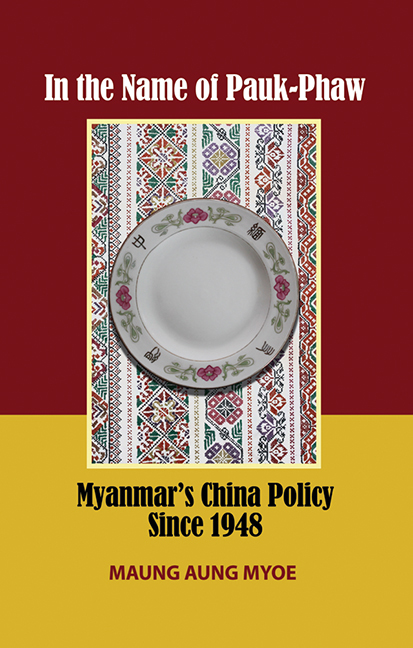Book contents
- Frontmatter
- Dedication
- Contents
- About the Cover
- Acknowledgements
- Chinese Names
- 1 Introduction
- 2 Sino-Myanmar Relations 1948–1962: The Years of Charting the Water
- 3 Sino-Myanmar Relations 1962–1988: Into the Years of Living Dangerously
- 4 Sino-Myanmar Relations 1988–2010: Towards Closer Cooperation
- 5 Conclusion
- Appendices
- Bibliography
- Index
- About the Author
5 - Conclusion
Published online by Cambridge University Press: 21 October 2015
- Frontmatter
- Dedication
- Contents
- About the Cover
- Acknowledgements
- Chinese Names
- 1 Introduction
- 2 Sino-Myanmar Relations 1948–1962: The Years of Charting the Water
- 3 Sino-Myanmar Relations 1962–1988: Into the Years of Living Dangerously
- 4 Sino-Myanmar Relations 1988–2010: Towards Closer Cooperation
- 5 Conclusion
- Appendices
- Bibliography
- Index
- About the Author
Summary
Since the nation regained its independence in January 1948, the Myanmar government has tried to find a way to deal with (at one time) an ideologically hostile and traditionally chauvinistic China, which pursued a foreign policy aimed at restoring its perceived historical influence in Myanmar. Countering the Chinese goal of influencing Myanmar's foreign policy options has always been a challenge for the Myanmar government. Since the 1950s, the Myanmar government has realized that bilateral relations with China can best be conducted in the context of promoting the Five Principles of Peaceful Coexistence, the Bandung spirit and the “Pauk-Phaw” friendship.
By bringing China into the Bandung process, promoting the Chinese image and allowing Beijing to play an important role in regional security, the Myanmar government believed that it could cultivate good relations with its great neighbour. Myanmar confirmed that it maintained a “One- China” policy and decided to resolve outstanding bilateral issues in a friendly manner. In fact, the Sino-Myanmar relationship became a model that the PRC government would like to promote in developing its ties with other countries. Sino-Myanmar relations therefore helped to consolidate China's international image. This fairly stable and correct relationship was also founded on the personal diplomacy between leaders of the two countries. By signing the Treaty of Mutual Non-Aggression and Friendship in 1960, the Myanmar government duly recognized Chinese strategic interests in Myanmar. Myanmar did not join any military alliance targeting China and continued to conduct its foreign relations on the basis of a neutralist philosophy. In this way, the Myanmar government made it known to Beijing that Myanmar would neither balance against nor bandwagon with China.
During the 1950s, there were three closely interrelated issues in Sino- Myanmar relations: the undemarcated boundary; the aggression of KMT remnant forces; and the incursion of PLA troops. While these issues were at the top of its agenda, the Myanmar government was shrewd enough to bring China, along with India, to inaugurate the so-called Bandung Era. This certainly increased moral pressure on the Chinese government to resolve bilateral issues in a peaceful and friendly manner. U Nu duly recognized China's important role in assuring regional peace and stability and accordingly accepted it.
- Type
- Chapter
- Information
- In the Name of Pauk-PhawMyanmar's China Policy Since 1948, pp. 179 - 190Publisher: ISEAS–Yusof Ishak InstitutePrint publication year: 2011

